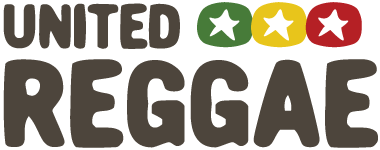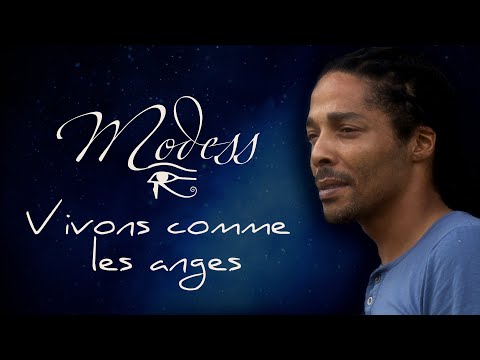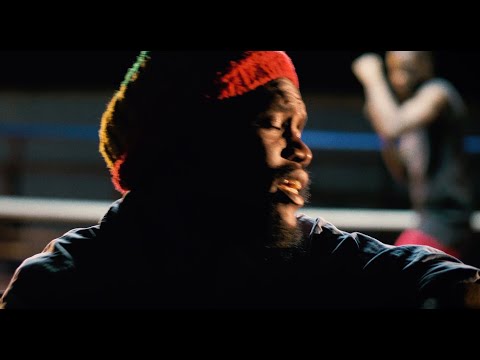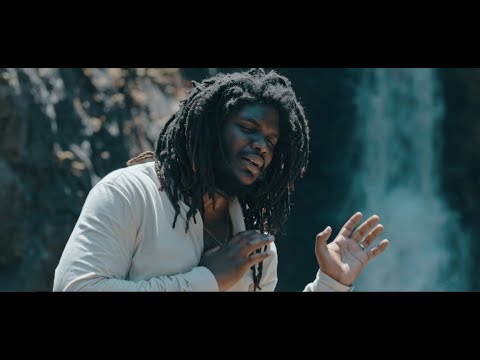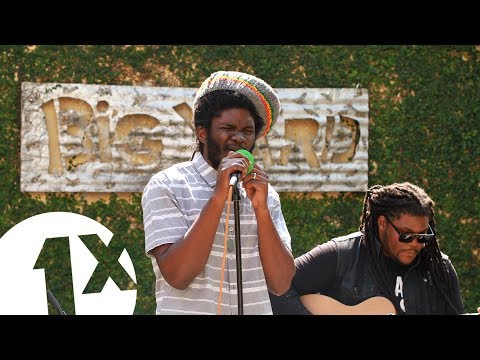Articles about reggae music, reviews, interviews, reports and more...
Interview: Ben Up and Barnabas talk Channel One (Part 2)
- Home
- Articles
- Interviews
- Interview: Ben Up and Barnabas talk Channel One (Part 2)

Interview: Ben Up and Barnabas talk Channel One (Part 2)
"Channel One was dominating the whole thing"
Sampler
In Part 2 of our interview with Ben Up and Barnabas on Channel One, they talk about meeting the Mighty Diamonds, conflicts with Studio 1, and the musicians who built the Channel One sound…
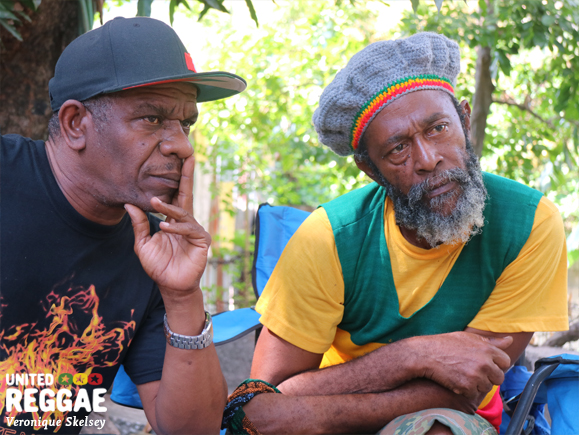
What was the first Channel One Sunday session?
Ben Up: We know the first hit was [Delroy Wilson] It's A Shame. But that was before the sound [got finalised] right? And the second was Call On Me.
Barnabas: And the third was [Horace Andy] World In My Arms. Those were the first three but that was before the sound was there yet. When we got the sound, The Right Time Come. It was the first one.
But before the sound got properly finalised what was the first Channel One release ever?
Ben Up: There was a tune remember? JoJo and Mellow produced it. The Tidals. Stand Firm.
Barnabas: How did I forget about Mellow? (Laughs) The man would dress so neat and original!
Mellow Williams. He was the studio manager.
Ben Up: Yeah he was the first one.
Barnabas: Because that it was even before I got there. Ben can tell you. Ben Up was there in those times. I came to know him after.
Ben Up: If you came to sing he would hear your voice and say "Your voice sounds like you need to get sandpaper and file down your voice and come back."
Barnabas: Yeah he used to do the auditions.
Ben Up: So yes, the Tidals came with that song.
What about Stranger and Gladdy – Don’t Give Up The Fight?
Barnabas: And Stranger and Gladdy too you now? Because I can remember when I was playing with Gladdy as a musician he told me about that. But we used to have a lot of fun. Delroy Wilson, John Holt, we used to play Ludi outside. Barrington Levy, Trinity, everybody.
Ben Up: Because the whole of those people JoJo bust them. Dillinger, Trinity, Lee Van Cleef.
Barnabas: Clint Eastwood
Ben Up: Jah Thomas, the whole of them would come. Channel One rose because after Studio One, Alton was worn out - and it was the same with Delroy and John Holt too. The same hits they had in Studio One, when they came and did back over those songs it took them to a different level. And most of them even started to get big tours in England. Every man would complain that Studio One didn't pay them, so they kept a low profile. So when Delroy came and had hits with It’s A Shame and Call On Me - the floodgates!
Barnabas: Because that's how we started doing Studio One rhythms and then make the singers sing original melodies. Channel One created that also. By doing over Studio One rhythms and letting the artists write original melodies and lyrics for the rhythm. And that tradition is going on up until this day in the music. We started that at Channel One. With the Diamonds. The Diamonds were the first ones to do it.
In 1975 Earl Chinna Smith produced Junior Byles Fade Away and gave it to Channel One to release. It wasn't a massive hit like Right Time but it made an impact.
Barnabas: It was very famous, especially in the dancehall. It was like a building process from all of that time.
Ben Up: That rhythm was played by Santa Davis, Fully George Fulwood and Snappin’.
Barnabas: Theophilus Beckford. Chinna wasn't on it.
Barnabas: But Chinna was the producer and the writer of it. So because he didn't know about the business part of it so much, I think that's how he gave it to JoJo to release it.
Ben Up: He was just concentrating on playing his guitar. And writing songs.
Barnabas: Because Soul Syndicate were the band before Sly and Ranchie.
Ben Up: Before JoJo created the Revolutionaries.
 JoJo created the Revolutionaries
JoJo created the Revolutionaries
Barnabas: It wasn't Sly and Robbie for Channel One. It was Sly and Ranchie McLean, Ansell Collins, Touter Harvey, Dougie, Lloyd Parks was the bass man before.
Barnabas: But he didn't turn up one day for a session and JoJo said to Ranchie "I like how you play the guitar. You should have an idea of how to play the bass".And from that little thing JoJo wanted him to do his thing all the time. And he played all of those hits but a lot of people think it's Robbie.
Ben Up: Robbie didn't play them.
Barnabas: Sly and Robbie played most of their productions and some of Striker’s things..
Ben Up: But not even as a bass player - as a guitarist.
Barnabas: Because Santa used to play with Robbie for Bunny Lee. After a while Sly started playing for him too but not so much.
Ben Up: Santa and Fish Clarke.
Barnabas: Johnny Clarke's brother - he was around too.
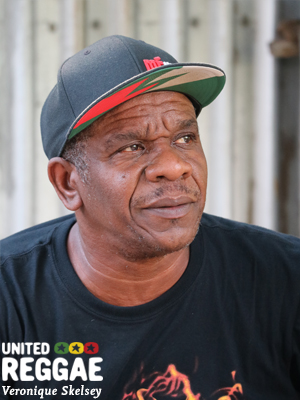 Didn’t Phil Pratt record in the early days of Channel One too?
Didn’t Phil Pratt record in the early days of Channel One too?
Barnabas: You called a big name there - Phil Pratt. He was one of the ones who was around from the beginning. He was one of the original producers. He used to produce artists like Jimmy London, Keith Poppin. He was like the second Don King of the music. Next to Bunny Lee!
Ben Up: A person that didn't have a studio.
Barnabas: Because he was like the second Don King and he used to give JoJo advice also. Phil Pratt. Went to England from way back in the late 70s. Because I used to engineer Phil Pratt too you know?
When did Sly first come to Channel One? And what was the first tune that he put his signature drum sound on?
Barnabas: I think the first tune he played on was It's A Shame.
Ben Up: I remember when he came with the electronic drum - Ernest helped him set it up.
Barnabas: No that was later. He's talking about the trap drum. I would say It's A Shame.
What about Welding by I Roy?
Barnabas: Ah – you’re right! How could we have forgotten I Roy? You're right. Welding was one of the first songs for true, Sly came there and played. But what really mixed this up is which one released first? Because Welding may be the first one that was played but It’s A Shame was the first one released from that batch - so that's really the difference. So which one released first? But I do think Welding was the first one for true.
Ben Up: Yeah but Welding didn't release first.
Welding came out in ’75.
Barnabas: Some of the first set of recordings weren't necessarily the first ones released. Because It’s A Shame released before Welding. Years before.
Ben Up: Welding came from Soldering.
Stanley Beckford.
Barnabas: Yeah, it was made from that era. So that's where Welding came from.
Ben Up: The idea for Welding came from one of our friends who passed away years ago. Squinching.
Barnabas: He used to cut the dubs after me. That is when I became so busy as an engineer so he took over as the dub man. We trained him also.
When did you start cutting the dubs? At the same time as engineering?
Barnabas: That was in the 70s. Because we first used to cut the dub straight from the board to the dubplate you know? We created that too. Then I got so busy as an engineer I had to start mixing upon the two track tape and they cut it off two track. Squinching would cut it. Because I didn't have the time to mix it straight from the board anymore.
Tell me about Ossie Hibbert and I Roy’s roles at the studio? They helped out too.
Barnabas: Ossie was originally a keyboard player. He used to be very close with Bunny Lee so he became very close with Ernest also. Ossie became like family because after a while because he used to do engineering also. I had to help them out because he wasn't really big time interested in the engineering after a while. So he would call me sometimes to come and give him a little helping hand to show him where this is or where that is. But Ossie he played a big role also.
What about I Roy? He was around the studio a lot?
Barnabas: Of course.
Ben Up: I Roy was a big man. He was a mustering man.
Barnabas: He liked to give a lot of jokes.
Ben Up: He was a fashion man.
Barnabas: I Roy was the first deejay that wore a suit every day.
 I Roy was the first deejay that wore a suit every day
I Roy was the first deejay that wore a suit every day
Ben Up: And pure jewels every day. Diamonds.
Barnabas: Well-dressed every time.
Ben Up: Clean black. Silk shirts. Barnabas: That’s the first deejay that could dress like a king.
Ben Up: What happened was the men that came from Coxsone, they came with what whatever information was needed and let it out! (Laughs)
Barnabas: Because after a while the relation got a little sour with Studio One and most of his artists came to Channel One. Not necessarily recording for Channel One but they were recording in the studio of Channel One for other producers. Channel One became the main studio. Like how Studio One was the main studio back in the days. That's what really happened.
You said in the last interview that when the Diamonds came they actually brought some Studio One master tapes of unreleased songs - is that right?
Ben Up: They did come with a four track tape. Do you remember when Tabby did come?
Barnabas: That was only one song I could remember. Shame and Pride. The one that they did for Jah Lloyd. That was Jah Lloyd's production. But he gave it to JoJo to put out also. But it was produced by Jah Lloyd.
So it wasn't a Studio One track after all?
Ben Up: No, no. I thought it was Studio One.
Barnabas: Because of the relation they had at Channel One with JoJo, Jah Lloyd gave it to them and asked Channel One to release it for him. So that's how Shame and Pride came into the picture. It wasn't really a Channel One production. But the Diamonds sang it and they asked someone to put it out.
Do you remember how the Diamonds first came in?
Barnabas: That was in about 1974-75. Actually what really happened was the Diamonds were all tradespeople. They used to do the welding trade in the street.
Ben Up: Bunny was a welder.
Barnabas: I think Mellow was the one who did the audition with them. Ben Up: I think Mellow brought them in because two of them lived nearby. Tabby lived near on Lincoln Avenue and Bunny lived right in front of Lincoln Avenue
Barnabas: And even Tabby used to do the welding too.
Ben Up: And Judge used to be in the police - in a blue suit.
Barnabas: Judge used to be in the force. But the music kind of made him leave it. Mellow was the man who introduced the Diamonds.
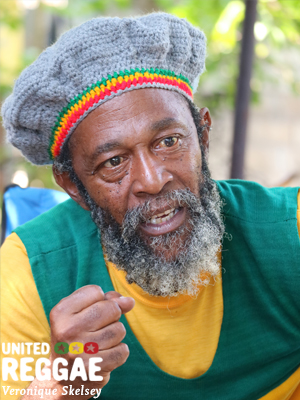 I think we also discussed in the last interview that there was some controversy over who played drums at Channel One. Horsemouth said that Sly got credited for some songs that he played on before he fell out with JoJo and left.
I think we also discussed in the last interview that there was some controversy over who played drums at Channel One. Horsemouth said that Sly got credited for some songs that he played on before he fell out with JoJo and left.
Barnabas: (Laughter) Horsemouth didn't play on any of the Diamonds songs. But he did play on some of those Delroy Wilson songs and so did Santa.
Ben Up: I talked to Ernest and Ernest said point-blank it was Sly and Santa Davis.
Barnabas: Soul Syndicate were there before Sly. JoJo always liked Santa also, so Santa would play a couple. Horsemouth played at Channel One for other producers. But not on Channel One productions.
Barnabas: It was only Sly and Santa and afterwards Style Scott started playing for Channel One. Because I played drums. You see those Gladiators’ songs that Channel One produced? An album with them and Don Carlos? [Showdown Volume 3] Those were the only drums I played for Channel One productions. But I played so many drums in Channel One for other producers.
Ben Up: That is what Horsemouth did. The only man who played outside of Sly and Santa is Rotterdam. Roots Radics.
Barnabas: He was the last.
Ben Up: And that was when JoJo’s thing reached a hustling thing.
Barnabas: Like Turn Me Loose and all those tunes by Al Campbell.
Ben Up: That was in the last section of it.
Barnabas: It was like a team. Because even Clevie and Steely they never played one song for Channel One. But they played all those hits in Channel One. There were a lot of people that recorded at Channel One but they didn't play for Channel One. That is the difference.
Ben Up: Because JoJo is a man who…
Barnabas: He was very selective. JoJo liked that crew that got the name the Revolutionaries. Which was Sly, Ranchie, Ansell Collins, Touter, and Dougie, because Touter used to be there before he hooked up with Inner Circle. We even forgot one of the keyboardists. Tarzan.
Ben Up: Mad!
Barnabas: He was a little cripple. But he was such a great keyboard player. Because he knew Sly from those days.
Ben Up: Mad organ! He used to play for them.
Barnabas: Dougie - the guitarist Radcliffe Bryan. I was even trying to find out if me and him were in any way related. Because my last name is spelt just the same as his. But I realised we weren't related.
Is it true that after a while when Channel One got big Studio One started to get annoyed about the licking over of the rhythms?
Barnabas: Oh yeah!
And then they started licking them back?
Barnabas: Well, guess who did that? That is how Sugar Minott came in.
Ben Up: And that is how Horsey came back and started playing over Studio One drums! Because the drum sound of Channel One was getting them crazy! So he made Horsey come and overdub on some of the rhythms. And Clevie. Barnabas: That was before Sugar Minott came to Channel One. Sugar Minott went and said to Coxsone: "Mr Dodd. Have you seen it is the whole of your rhythms they're doing over? Let me sing over I Need A Roof". That is why he went and sang that song. I Need A Roof. And it created a controversy with Coxsone and JoJo. Because JoJo used to buy records from Coxsone to put in the jukebox and then JoJo went down to Randy's! And him and Coxsone caught up in some argument remember?
Ben Up: But that is not what caused it…
Barnabas: What caused it?
Ben Up: The first disco 45. Truly and Yaho [Jays and Ranking Trevor] He said he can't take it anymore and then he did hold up on JoJo.
Barnabas: That rhythm. They had a big fight over it. But back in those days Channel One was dominating the whole thing. From the 70s right back to way up in the 80s. Because JoJo wasn't even putting out a whole heap of song in the 80s either. It was mostly Junjo coming in recording at Channel One and everybody wanted to record at Channel One. So everyone was coming to the studio.
Ben Up: Channel One was taking a solid 10 years out of the business.
Barnabas: That sound that we built, it became the dominant sound. Because Sly knew the sound that he wanted also, so Sly decided to spend that time to get the sound. To have that sound you had to have a drummer that played the whole day. You couldn't experiment on the sound without a drummer playing the whole day. So JoJo and Sly knew that they were going to do a portion of production after they got the sound. Because JoJo and Ernest talked to him. When the sound was built everybody wanted to record there. Even Bunny Lee. Bunny Lee came back and recorded there. Everybody.
 Sly knew the sound that he wanted
Sly knew the sound that he wanted
Ben Up: The studio ran 24 hours, seven days a week.
 The studio ran 24 hours, seven days a week
The studio ran 24 hours, seven days a week
Barnabas: I used to come from the studio at 4am in the morning most of the time and I have still have to come back by 8 o'clock! Because somebody's trying to get two hours from 8 to 10. Because the studio was booked from 10 o'clock until every day. Except Sunday.
Ben Up: JoJo time.
Barnabas: And Saturdays because I used to love racehorses so much that I would take Saturday for myself.
Ben Up: If Barney was away Maxie would come in.
Barnabas: Maxie - Lancelot McKenzie - and Bunny. So I would get Saturday off so I could go to the track and watch my little racehorse. I used to love racehorses. I don't buy any more for years. I got too old for that. I can't take those losers! I have to win all the time now so I keep my money to buy food in to take care of me.
So when did the Wailing Souls start coming in?
Barnabas: That was in the late 70s also.
Because they were at Studio One in the early 70s…
Barnabas: Yeah! All those artists came to Channel One after. That is where Kyso came in. Kyso grew in Trench Town.
Ben Up: Kyso brought them in. They came in in the heart of the war because they came in around ’76 now. When the politics came and through Kyso.
Barnabas: The first tune they recorded on Channel One was Things and Times.
Ben Up: What happened for everyone was - once you sing with Coxsone or you sing for Duke Reid or Pottinger…
Barnabas: Channel One was the place after.
Ben Up: Everybody headed there.
Barnabas: So all the artists were checking out Channel One.
Ben Up: JoJo didn't have to send or call no man.
Barnabas: Because some of the artists used to just come and hang out at Channel One and then they end up meeting JoJo and ended up working there. And JoJo got to find out "How are you name sir?" and make arrangements to produce them.
So the studio had the API board, two tape machines, a four track recording machine. How did the studio upgrade to 16 track?
Barnabas: Well after a while I mastered the engineering so much the Ernest started letting me do most of the engineering. That was when he started concentrating more on the poker machines. After a while it got extended. At first it was four track and two track. You record on the four track and mixed down on the two track. But then it started getting bigger and bigger, so JoJo had to get another four track to transfer because we needed more tracks. And that's how we started realising "But if we need more tracks then we need to start buying a 16 track". And then the tracks started extending more and more. And that is how we never went further than 16 tracks. It was in the late 70s. Like about 78 to 79.
How was the Channel One test tone created?
Barnabas: Oh, I was the one that brought in that. As an engineer. That was the tonation and I was playing with it one day I was just fooling around one day “I want to go and turn it like that” and I heard it make that noise. And I thought "That would be a good sound to put in the music". And I started putting in the music and delaying it and it became famous. People started liking it.
Because Tubby had his test tone which was just a bleep. But Channel One had their one where the sound went up-and-down.
Ben Up: It was a little section that Barney used to have that you could twist.
Barnabas: I was just fooling around with it and then I realised I found a little thing with it. And it became the test tone for true. But then I started turning it fast and it gave that sound. Because it would give you the high the middle or the low. But when I turned it fast that is how I heard that sound. It was a part of the creation and I just happened to like it and start mixing it in the dubs and it became famous. It was in a couple of records for real. But I was the one who brought it in too.
Because like I said King Tubbys was the first dubmaster and I became the next dubmaster after King Tubbys. Because I mastered the dub so well that Bunny Lee wanted to take me from Channel One to go work the King Tubbys! But when I looked at it now I said "I can't leave a 16 track studio". And plus Channel One became my home so much that I didn't want to leave. I fell in love so much with Channel One knowing that I lived across the street and this was where I learned my career, so it was very hard for me to really leave.
 I became the next dubmaster after King Tubbys
I became the next dubmaster after King Tubbys
But Bunny Lee wanted to take me to Tubbys. Because Tubbys started hearing of these mixes I was doing and really liking it. Because Tubbys was just like Ernest. He was a technician also. So that is how Scientist came in now and Tubbys kind of turned it over to Scientist. Then Jammys came after, then Bobby Digital and everybody came after. But Channel One was the place where they used to come and record.
Ben Up: Bunny Lee carried Jammys and Black Scorpio to do their first set of rhythms.
Barnabas: Because they only used to do mix and voice at Tubbys. So they couldn’t record the live rhythm. Bunny Lee was the one who introduced most of them to Channel One.
Read more about this topic
Comments actually desactivated due to too much spams
Browse by categories
Recommended Articles
Latest articles
Recently addedView all
© 2007-2026 United Reggae. All Rights Reserved. Reproduction in whole or in part is prohibited. Read about copyright
Terms of use | About us | Contact us | Authors | Newsletter | A-Z
